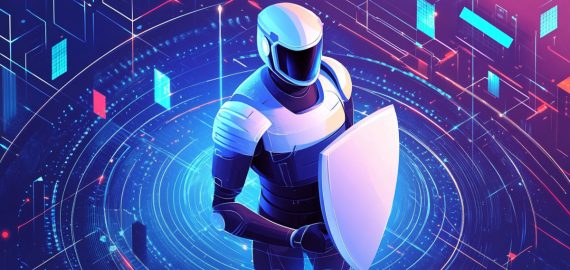Leveraging Zero-Knowledge Proofs: NEAR Protocol’s Strategy for Enhanced Blockchain Efficiency


In Brief
Altan Tutar, CEO of Nuffle Labs and NEAR contributor, discusses Web3 industry evolution, ZK technology usage, and NEAR’s innovative approaches to developer experience and blockchain adoption.
In anticipation of the upcoming Hack Seasons Brussels event, we had the opportunity to interview Altan Tutar, a Co-Founder and CEO of Nuffle Labs and contributor to NEAR. In this discussion, he shares his insights on the evolving Web3 industry, the usage of ZK technology, and NEAR’s innovative approaches to enhancing the developer experience and broadening blockchain adoption.
Many entrepreneurs are drawn to their field by a specific moment or event. What sparked your interest in this industry, and how has your passion evolved over time?
I started in crypto back in 2021. I began deep-diving into how crypto works and was fascinated, especially coming from Turkey, where we deal with a lot of inflation. Digital money made a lot of sense to me.
I quickly got involved in hackathons, building cool stuff. My first hackathon was in Warsaw, where we created a zkKYC solution. The second one was in New York, where we built something quite simple for DAOs. We won that hackathon, inspiring me to start a new foundation. My initial projects were hacky, involving ZK and smart contracts, helping me get into the space.
You mentioned you’re from Turkey. Can you explain the state of Web3 in Turkey?
An interesting article recently stated that 4% of Turkey’s GDP is in USDT, reflecting the country’s economic situation. Many people hold USD or use USDT for arbitrage due to the unstable Turkish lira. This speculation is part of a broader trend where people seek stability and potential gains in a volatile environment. Right now, Turkey is a major crypto market, especially in centralized exchanges.
Currently popular among the crypto community, DePIN and RWAs have faded zero-knowledge proofs, but this technology is still essential for Web3 development. How is NEAR leveraging ZK technology?
We have a different perspective on ZK. Back in 2020, the use of ZK was banned due to the high costs of computation with provers. Last year, we started exploring ZK more seriously. While the work is currently on hold, we saw ZK as a way to make blockchains more efficient by offloading certain computations off-chain and proving them faster and cheaper. We’re working on ZK-WASM for our sharding design. On the base layer, ZK can enhance efficiency, and on top of that, we’re seeing applications like ZK ID solutions.
Are there other solutions you use besides ZK to reduce costs, given its expense?
Yes, we also focus on other technologies. ZK technology is about trust in computation. I’ve leaned more toward cryptoeconomic security with EigenLayer. There’s a spectrum from ZK’s trust in computation to EigenLayer’s cryptoeconomic security. Hence, we’re building services using Eigenlayer to balance trust and cost.
NEAR touts its “developer-friendly” environment. What are some concrete ways NEAR makes dApp development easier compared to other platforms?
One of the key reasons I started to work with NEAR in 2022 was its developer-friendly approach. A notable feature was the JavaScript SDK for smart contracts, making it accessible to almost every programmer, unlike Solidity and Rust, which are more specialized.
Additionally, NEAR uses a WASM environment, which is more general and widely used across the internet compared to EVM, which is specific to crypto. This allows us to onboard developers from Web2 to Web3 without extensive retraining. We also offer a command-line interface, making it easy for developers to deploy and interact with contracts.
With NEAR Protocol being open source, how does the team incentivize and reward external contributions to the codebase?
We have something called DevHub, a collective that contributes to the NEAR protocol. It started as a DAO but evolved into a community. All tools are open-source, and contributions are incentivized, particularly in DevRel. We’ve even hired contributors who showed exceptional work. Good contributions are eventually rewarded retroactively.
NEAR is taking a “blockchain OS” approach. What functionality does this provide that a standalone blockchain cannot?
We adopted the blockchain OS approach during the last bear market. It was eventually refined to chain abstraction. This means providing a seamless entry point for users to interact with multiple blockchains without needing to bridge them. We use technology like chain signatures, allowing one NEAR account to drive multiple blockchain accounts (e.g., Ethereum, Bitcoin). This approach simplifies interactions between users and developers.
What attracts consumers to the NEAR protocol, considering some believe the focus in the industry is more on technology than consumers?
We have a lot of users, and our growth strategy has been akin to B2B2C. We work with businesses that already have a large user base and convert them into blockchain users. Our developer tools facilitate easy integration into existing apps, attracting both businesses and consumers. For example, partnerships with apps like Sweatcoin, KaiKai, and HotWallet have helped us grow our user base.
Bridging the gap between Web2 and Web3 is now a hot topic. What cross-chain integrations or tooling does NEAR provide to aid this transition?
Yes, one of NEAR’s cool features is FastAuth, which allows users to log in with a Google account, similar to Web2 logins. This eliminates the need to deal with keys. Unlike Metamask, NEAR’s account model allows users to interact without extensive sign-ups, making the transition smoother.
How does NEAR Protocol’s collaborative approach with other blockchain projects, like Polygon, enhance its capabilities?
In 2021 and 2022, being an “Ethereum killer” was a narrative, but we’ve adapted by exploring Ethereum Layer 2s and data availability portions. We outsource NEAR’s data availability to other roll-ups, enabling us to collaborate with other L1 and L2 teams like Polygon and Optimism. This adaptability keeps us relevant and allows us to educate the market and position our product accordingly.
With the upcoming array of events, what are your plans for the Hack Season Brussels? Can you share any insights?
From our perspective, we’ll introduce our work, including NEAR DA, which makes rollups cheaper. We already have a top-17 rollup building on NEAR DA. When our product is ready, we’ll bring fragmentation with the Fast Finality Layer, allowing fast transactions and messages between rollups with EigenLayer security. I’m excited about sharing more about NEAR and exploring AI applications.
At large events like Ethereum CC, what topic do you think needs to get more attention from the crypto community?
While ZK and others get a lot of attention, real-world assets (RWA) seem to need to be more represented. For example, USDC is a real-world asset. Integrating RWAs into crypto can bring more capital into the space. Projects like EigenLayer are creating new primitives by securing assets like USDC. The use of RWAs to increase on-chain assets is fascinating and deserves more attention compared to the constant focus on Layer 2.
Disclaimer
In line with the Trust Project guidelines, please note that the information provided on this page is not intended to be and should not be interpreted as legal, tax, investment, financial, or any other form of advice. It is important to only invest what you can afford to lose and to seek independent financial advice if you have any doubts. For further information, we suggest referring to the terms and conditions as well as the help and support pages provided by the issuer or advertiser. MetaversePost is committed to accurate, unbiased reporting, but market conditions are subject to change without notice.
About The Author
Victoria is a writer on a variety of technology topics including Web3.0, AI and cryptocurrencies. Her extensive experience allows her to write insightful articles for the wider audience.
More articles

Victoria is a writer on a variety of technology topics including Web3.0, AI and cryptocurrencies. Her extensive experience allows her to write insightful articles for the wider audience.

















































